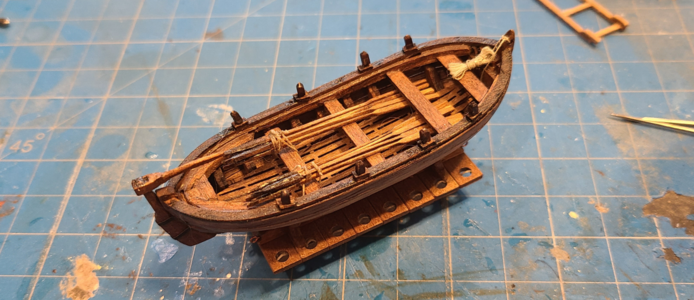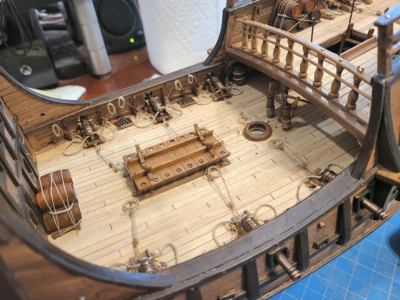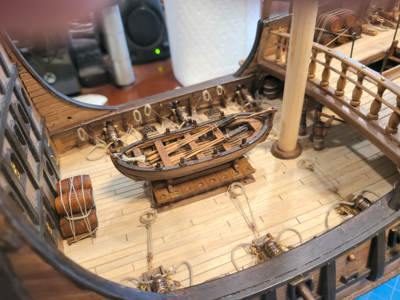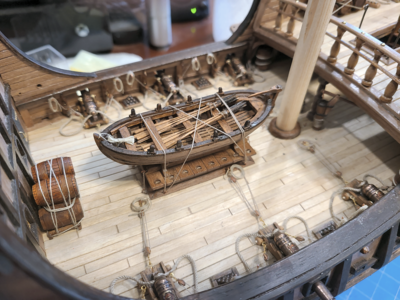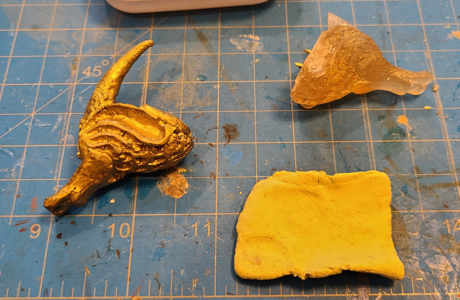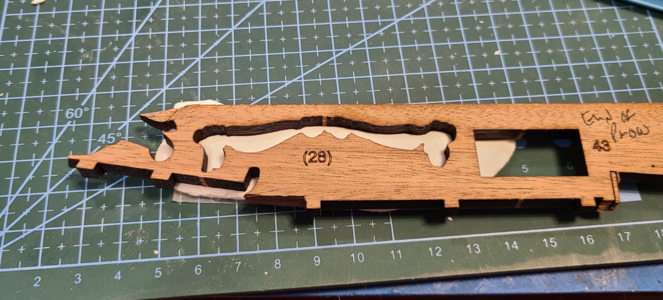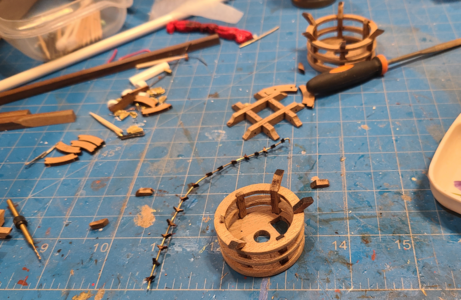I wanted to work on the deadeyes next, and since I had bought them from 3 different sources, and they came in colors from dark walnut to almost white, I had to stain them all dark. The ones that mount by wire to the channels, I went ahead and added wires to them, although I'll probably twist them differently later. The rest, I just strung on wire and dipped them in dark stain to normalize the colors:
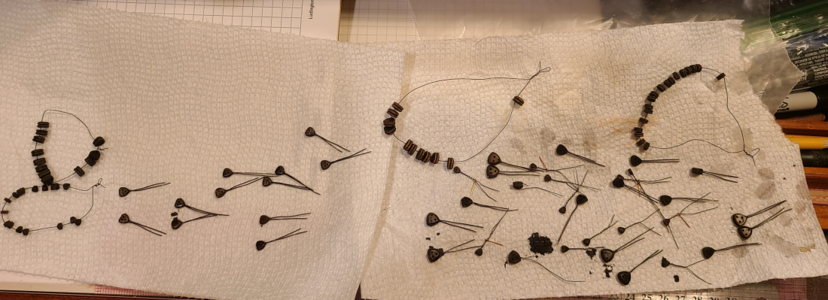
At this point I found out that my supervisor had gone on a break:
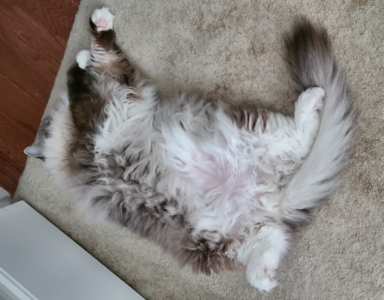
so decided to work on the rudder a bit. I won't be mounting it until much later, but wanted to work out a few things.
The rudder hinges are thick photo-etched brass, and look pretty good. However, the hinge centers/pivots are etched circles, which must be bent in half, and half-circles, which are placed in the rounded areas of the hinges:

MarisStella suggests soldering them, or gluing them in place, without much added information. It looks like the recessed outlines of the half-circles are intended to sit down into the hinge straps, but I found doing that quite difficult. I felt there should be a better way, for me.
I found some plastic tubing and smaller plastic rod, drilled out the tubing to fit the rod into, and CA glued it in place about 2" or solid rod. My intent is to make my own half-circles for the hinges, which could then be glued in place.

After the glue dried, I split the rod/tube combination to leave a half round portion to form the hinge pivots:

Due to the melted plastic, it looks worse than it actually was (so what else is new?).
Exposing the half portion:

After a bit of cleanup, I tested the piece for fit with a hinge strap:

I used the straps to set the length of the cut half-rounds:

Looked to me like they will work:
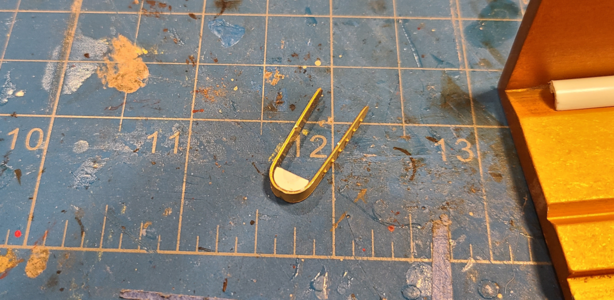
Half rounds are cut and ready to install into the hinge straps:

I used CA glue and clamped them tight:

All half rounds glued into place:

I made a simple jig to hold the hinges in place while I drilled holes for the pins. These holes need to be offset toward the outside of the round, to have clearance when they are assembled:

I used #18 x 1/2" brass plated steel escutcheon pins (1.2mm in diameter) for the pivots. Each hinge fits together like this:

After gluing the rudder-portion hinge straps in place, and temporarily mounting the mating parts we have:

I have some cleanup to do before it's finished, I'll cut the pins shorter, of course, and also paint the exposed portions of the white plastic brass. This will be set aside until later, so that I can continue to use the working cradle for the hull for the remainder of the build.
Now back to thinking about the links for the deadeyes...







